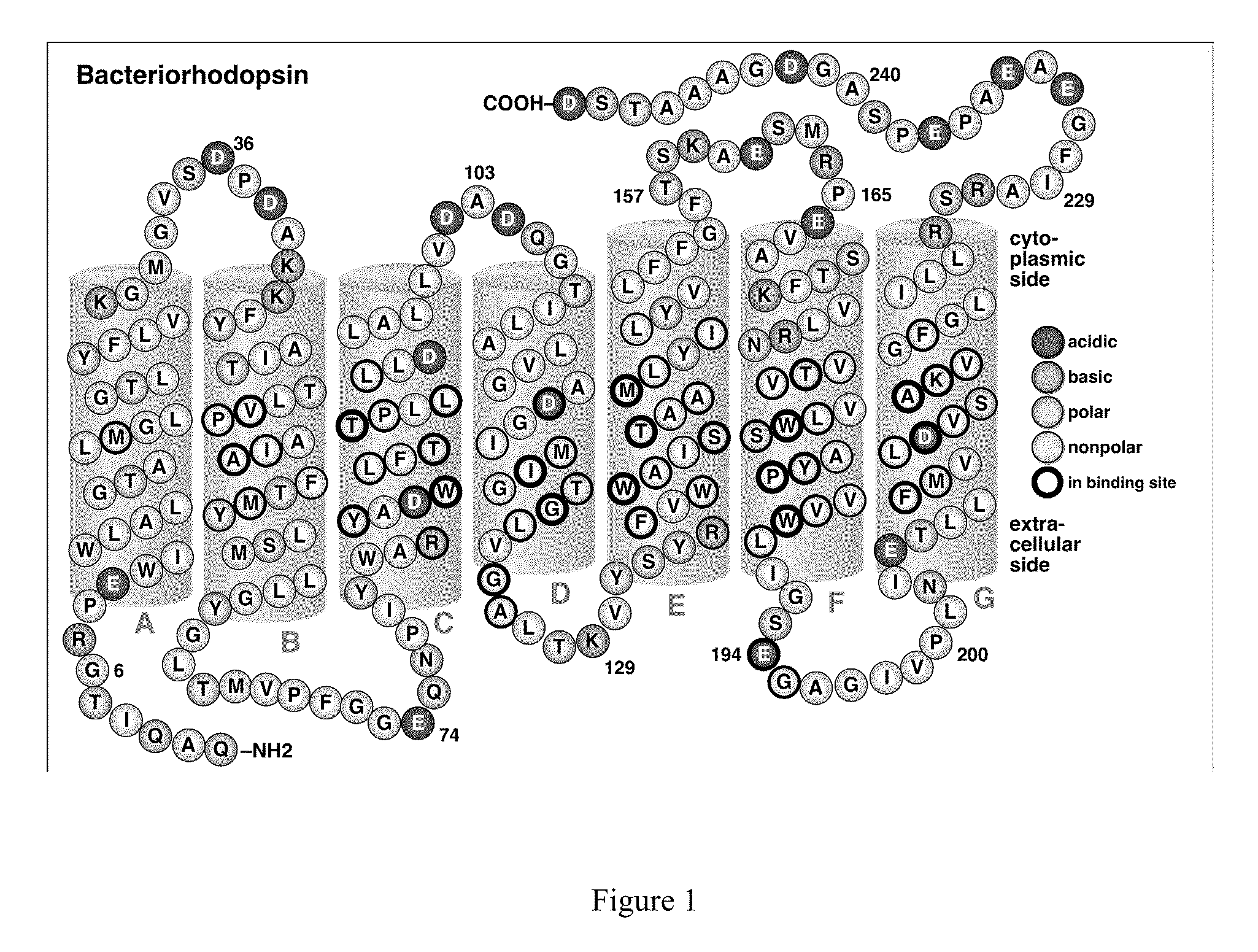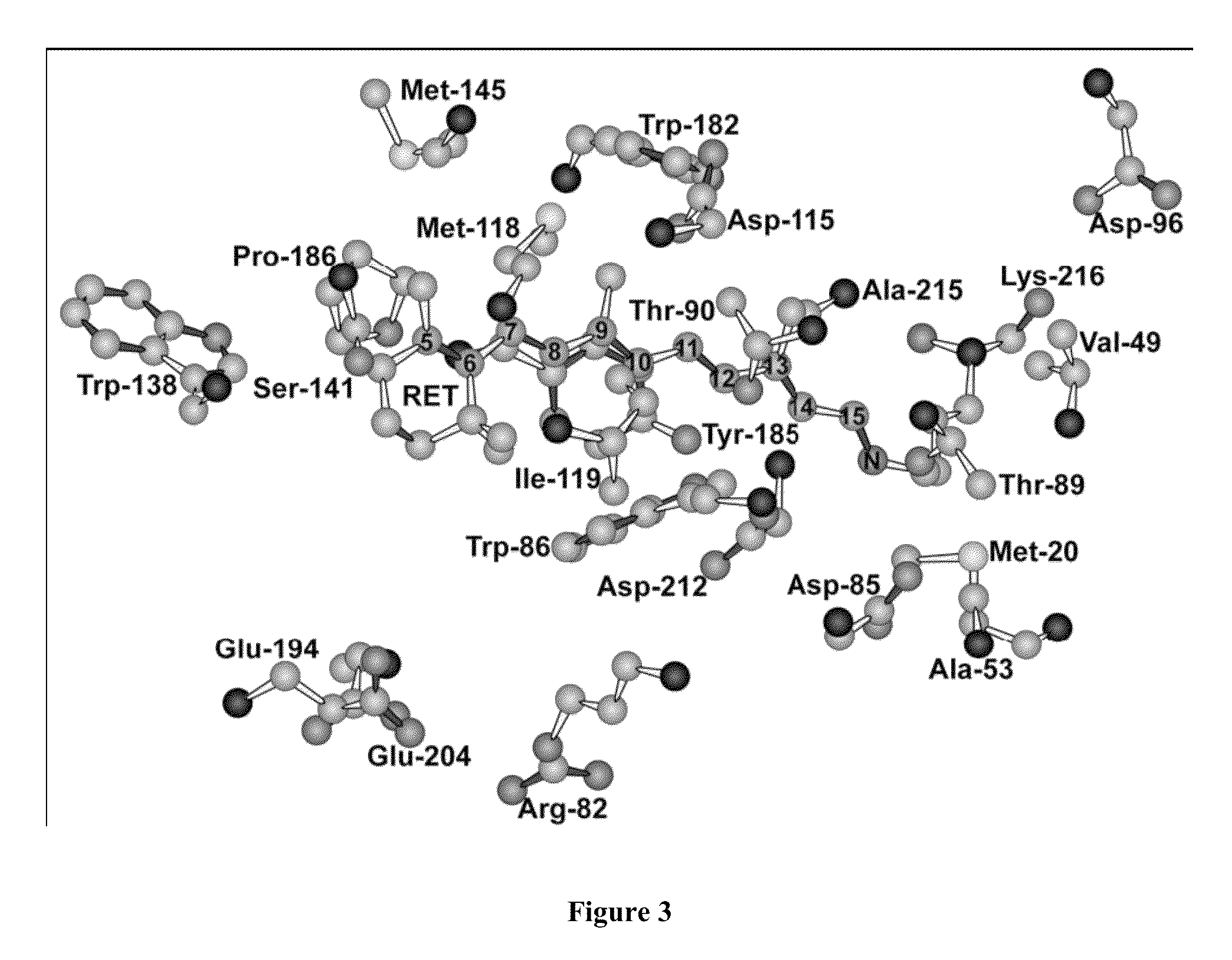Bacteriorhodopsin protein variants and methods of use for long term data storage
a technology of bacteriaorhodopsin and protein variants, which is applied in the direction of peptide/protein ingredients, peptide sources, instruments, etc., can solve the problems of unwanted photochemical reactions in adjacent cells outside the exposed area, the need to mechanically orient the memory cube relative to the laser, and unwanted side reactions in adjacent bit cells, etc., to achieve high throughput storage
- Summary
- Abstract
- Description
- Claims
- Application Information
AI Technical Summary
Benefits of technology
Problems solved by technology
Method used
Image
Examples
Embodiment Construction
[0023]Bacteriorhodopsin variants and methods using the variants for performance in holographic and three-dimensional (3D) memory storage devices are described. The genetic and chemical modifications of bacteriorhodopsin described herein provide greatly enhanced protein performance. The genetically modified bacteriorhodopsin-based memory devices provided herein write, read and erase data proficiently.
[0024]Bacteriorhodopsin is a membrane-bound light-transducing protein that functions as a proton pump in the archaeon Halobacterium salinarum (previously known as Halobacterium halobium or Halobacterium salinarium). H. salinarum has adapted to high salt environments (5 M or 25% NaCl) and can use bacteriorhodopsin to absorb light energy and convert it to chemical energy. In response to low oxygen availability, H. salinarum produces a purple membrane, in which thousands of bacteriorhodopsin trimers are assembled in a 2D hexagonal lattice. Although bacteriorhodopsin is crucial for long-term...
PUM
| Property | Measurement | Unit |
|---|---|---|
| magnetic fields | aaaaa | aaaaa |
| storage density | aaaaa | aaaaa |
| photochromic | aaaaa | aaaaa |
Abstract
Description
Claims
Application Information
 Login to View More
Login to View More - R&D
- Intellectual Property
- Life Sciences
- Materials
- Tech Scout
- Unparalleled Data Quality
- Higher Quality Content
- 60% Fewer Hallucinations
Browse by: Latest US Patents, China's latest patents, Technical Efficacy Thesaurus, Application Domain, Technology Topic, Popular Technical Reports.
© 2025 PatSnap. All rights reserved.Legal|Privacy policy|Modern Slavery Act Transparency Statement|Sitemap|About US| Contact US: help@patsnap.com



